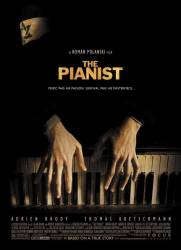Factual error: An old man appears with children following him. This is supposed to be pedagogue Janusz Korczak. It appeared as if he was just wearing a suit and a Jewish arm band. In the Warsaw Ghetto, Mr. Korczak never wore an arm band and wore his WWI Polish Army Uniform, both as acts of defiance. He was beaten and almost put to death (he had connections) for not wearing an arm band so having one on in the movie is inaccurate.
Factual error: In a few scenes, you can see street signs with inscriptions in Polish, for example "Ulica Lubanski" (Lubanski's Street). In fact, because Polish language retained the Old Slavic case-system with seven cases for nouns, the inscription should be "Ulica Lubanskiego" ('Lubanski' is a nominative noun, and 'Lubanskiego' is a genitive/possessive case).
Factual error: In the scene where the Germans are bombing the wall, the rebels are hiding behind. You can see that the bricks which came out of the wall because of the bombing are lying on the "non-Jewish" part of the wall and not on the ghetto side as it should be.
Factual error: The German tank's gun would not have had powered elevation, and possibly not powered turret traverse (if it was a 75mm Mk. III, or a Mk. IV J), although its appearance was unusually accurate.
Suggested correction: The German tank is simulating a PZ III N. The Pz III Ns were converted late models Pz IIIs, its original L60 50mm gun was replaced with a 75mm L/24 gun from the early Pz IVs that were all up-gunned leaving, large numbers of the older 75mm L/24 guns which they were originally equipped now available. The Pz III N is the last variant of this Pz III during the war. It has power traverse and manual elevation.
Factual error: The credit of the film describes the German officer who slapped Szpilman's father as "SS officer who slapped the father." The credit also describes the German soldier who gave a speech to Szpilman and other labor camp prisoners as "SS who gave speech." However, in the film both of these German soldiers were wearing Wehrmacht (i.e. regular Army), not SS, uniforms. SS uniforms can be easily distinguished from Wehrmacht uniforms due to different collar insignia.
Factual error: In the DVD extras, the bio of Thomas Kretschman states that he was an East German swimmer who didn't go to the 1980 Olympics because of the communist boycott. The 1980 Olympics were held in Moscow, therefore no communist boycott. The 1984 games were in Los Angeles, they were boycotted.
Factual error: On a real Waffen SS helmet, the SS insignia is always painted on the right side of the helmet while the swastika is always painted on the left side of the helmet. However, in some of the scenes of the film, the SS insignia appeared on the left side of the Waffen SS soldiers' helmet.
Factual error: While the Szpilman family is listening to the radio learning of France and Britain's declaration of war, the radio is interrupted with a German radio broadcast. This broadcast however is Goebbel's 1943 Total War speech, while the scene takes place in 1939. (00:04:00)
Factual error: Władysław Szpilman is searching for food in a basement of a ruined house and finds a can. The body of that tin-can is welded with the Soudronic welding method, only invented in 1965. (01:58:01)
Factual error: The tram appearing in December 1939 is a K type no. 403, built in 1940. The same two trams are always on the scene - no. 257 and no. 403. (00:12:05)





